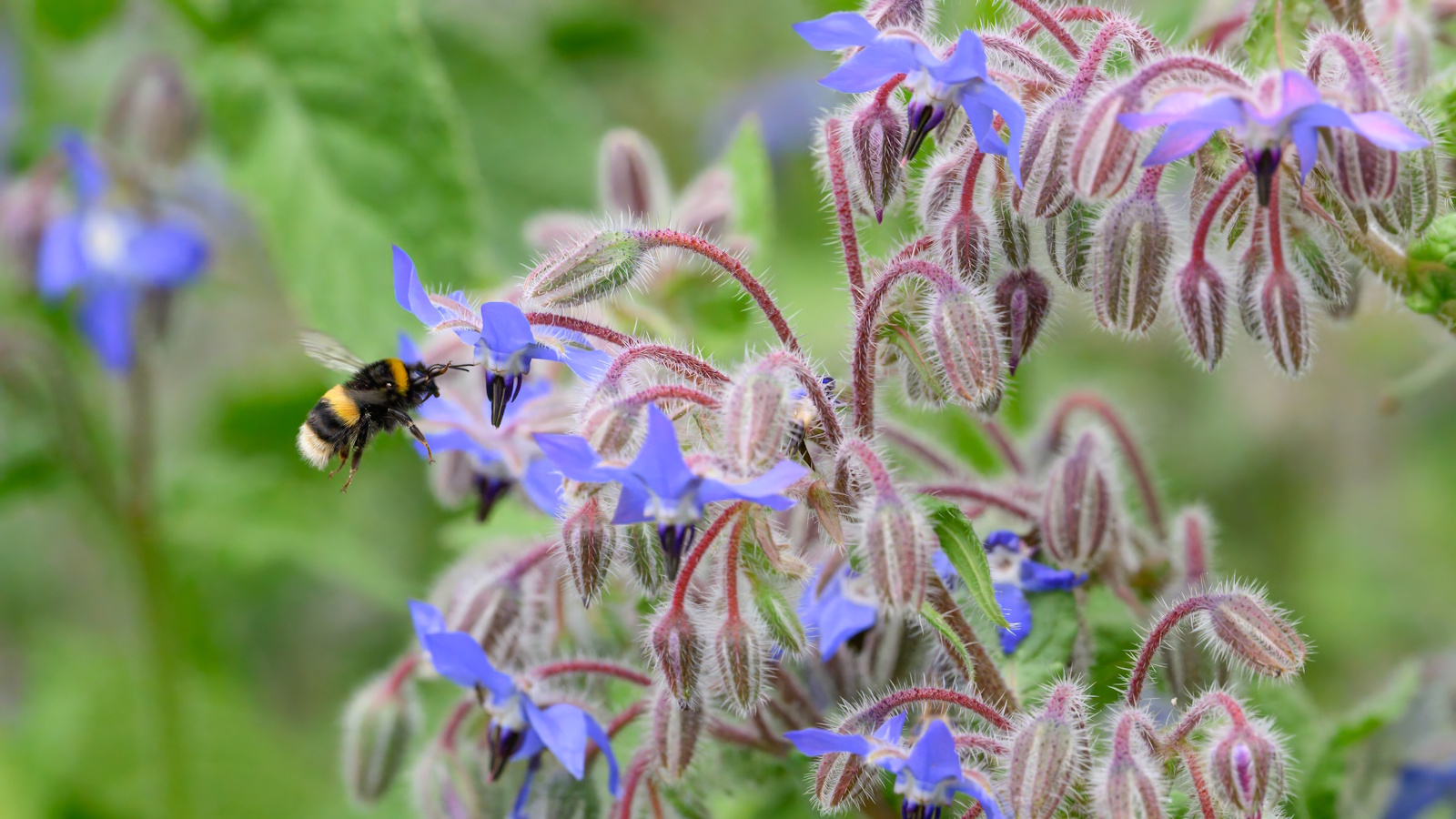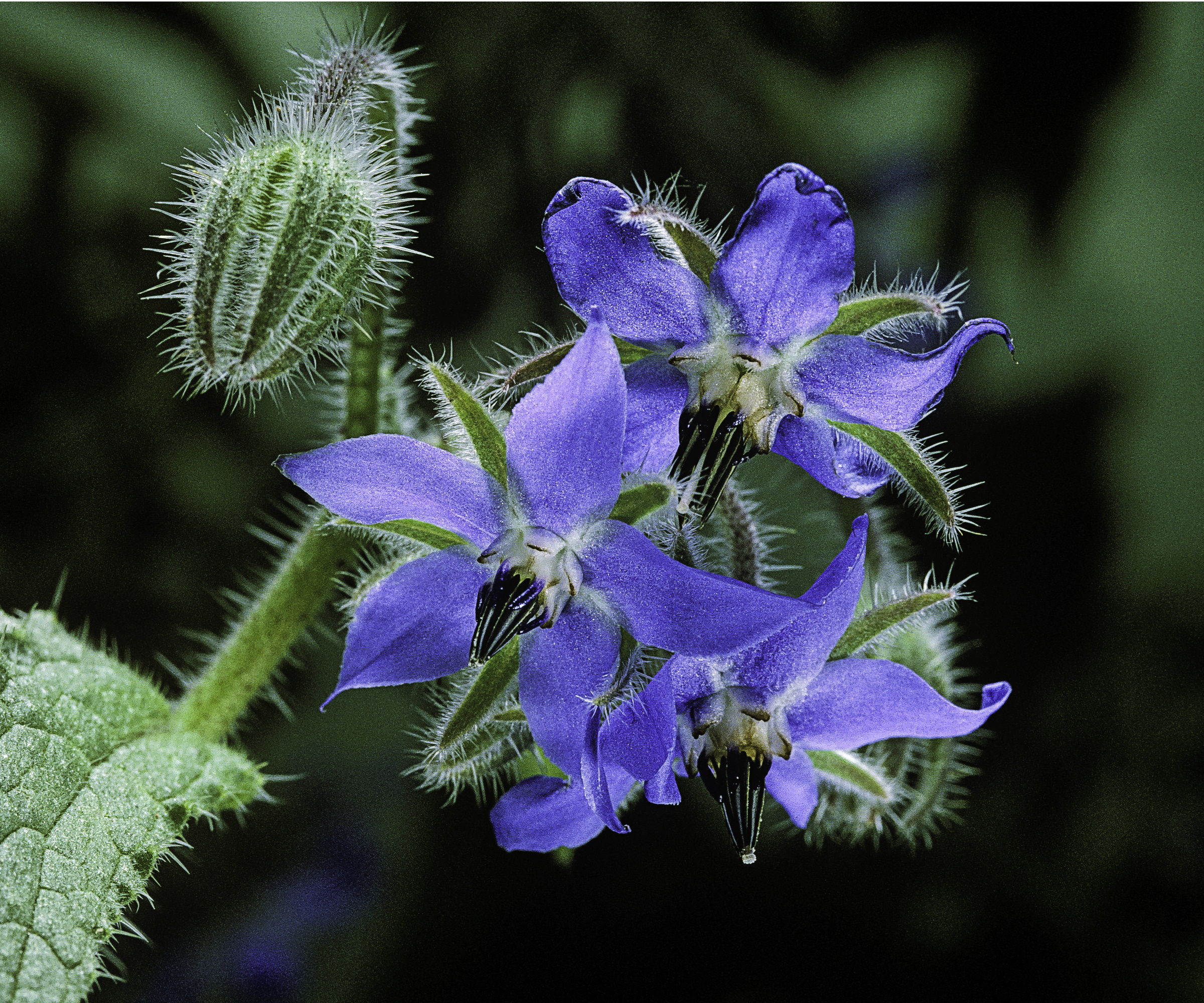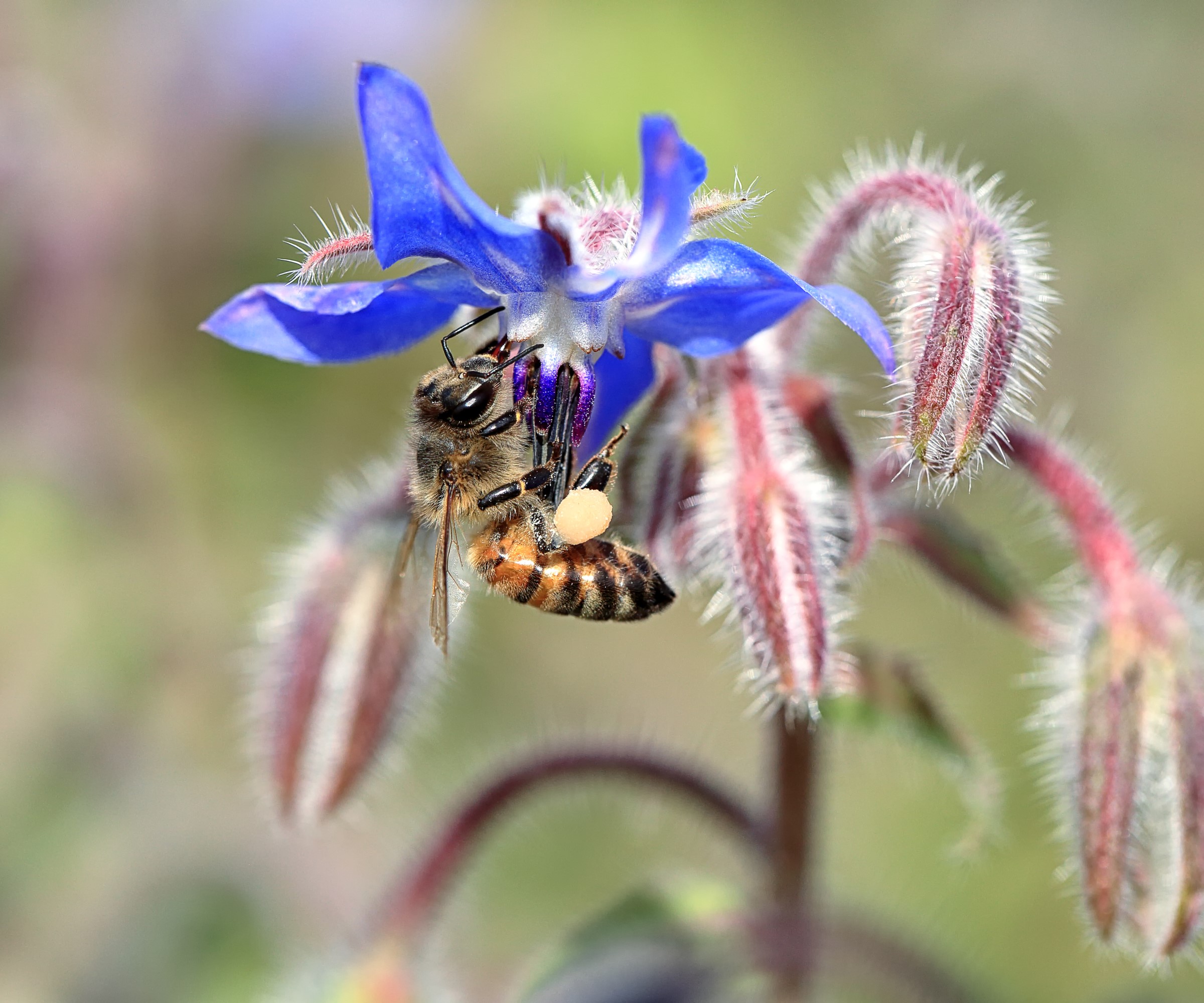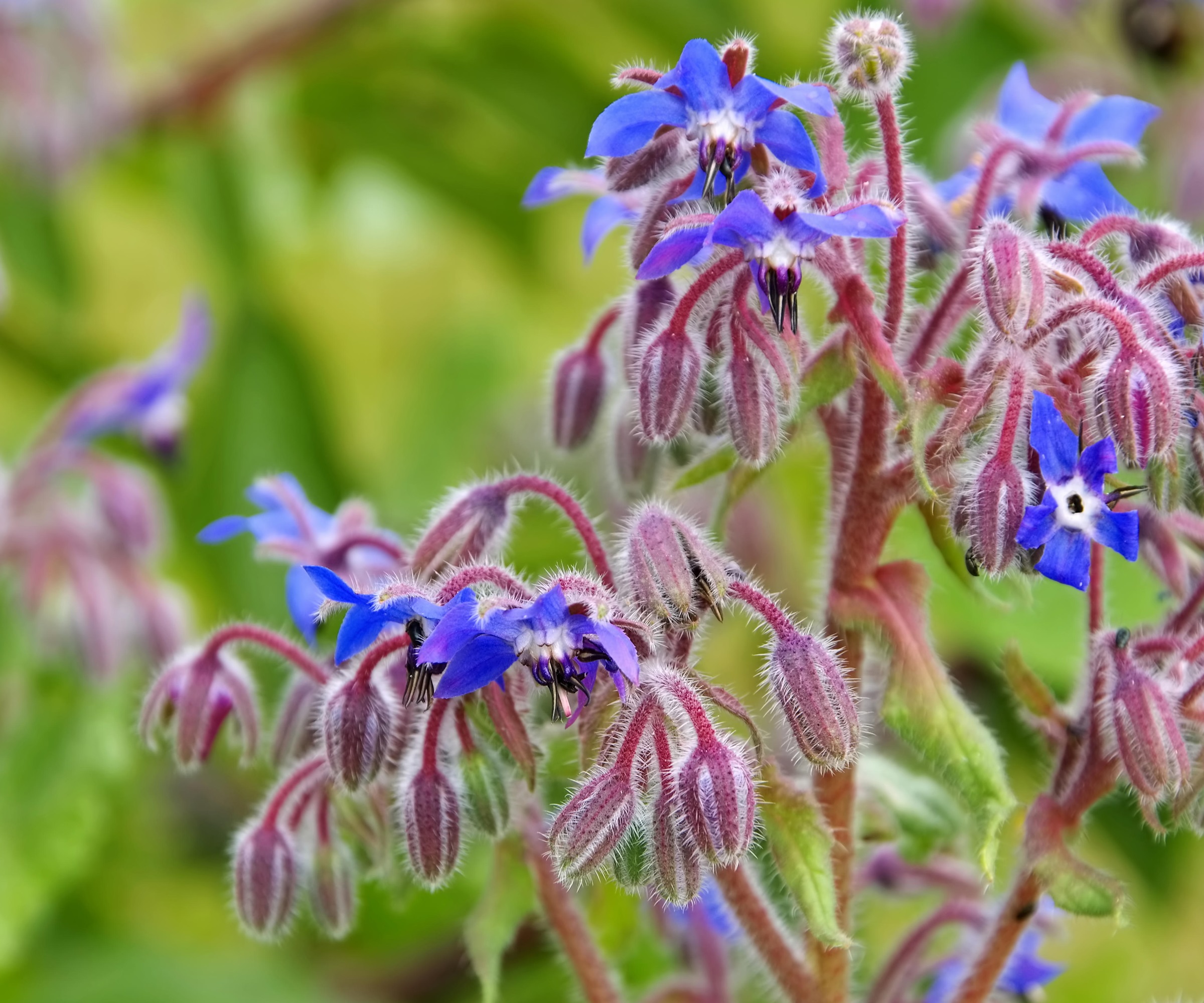How to grow borage – experts explain the many perks of this low-fuss annual herb
Borage is a triple threat in the garden as a pollinator companion plant, a healing herb and a culinary flavor addition


You would be forgiven if you mistook the beautifully blue, star-shaped flowers and rough, hairy stems and leaves of Borago officinalis for a perennial garden stalwart. Borage is, however, a robust annual that vigorously self-sows. The full-sun Mediterranean native grows in USDA hardiness zones 2-11, making it a plant available to most any gardener.
Borage’s cucumber-flavored flowers and leaves place it firmly in the kitchen garden. Pollinators have rights to borage for its nectar-rich flowers, too. In the vegetable garden borage plays a supporting role, acting the part of the much-visited pollinator plant, thus luring bees and butterflies toward awaiting tomato, pepper and cucumber flowers.
Herbalists may claim borage as one of their own for its effects on inflammation, anxiety and skin conditions. So, if you’re looking for herb garden ideas of any sort, borage has you covered in multiple respects. Our experts explain how to grow this jack-of-all-trades herb. Spoiler alert: It’s pretty darn easy.

How to grow borage
As many Mediterranean plants do, borage thrives in full sun and well-draining to poor soils. It’s tiny white to clear hairs, evident even as small seedlings, serve to protect the plant from herbivores and ultraviolet rays, as well as helps the plant to conserve water. They also regulate borage’s temperature during hot days and cool nights.
Live borage plants are available from Walmart.
Borage seeds are available from Burpee.
Growing habits of borage

‘Borage is a charming, hardy annual herb with a loose, sprawling habit,’ says Alexander Betz, landscape designer with Plant by Number. ‘It grows quickly to a height of 1-3 ft. and a width of 9-18 in., often leaning or cascading, giving it a casual appearance in the garden,’ he adds.
Design expertise in your inbox – from inspiring decorating ideas and beautiful celebrity homes to practical gardening advice and shopping round-ups.
Author and podcaster Kathy Jentz uses borage in her community garden’s pollinator strip. ‘It attracts bees, butterflies and other pollinators like crazy,’ she says. In Kathy’s own garden, ‘I’ll use it as an edge plant, near the tomatoes and such. The bees will come to the borage in droves and then they’re like, ‘Well, while I’m here I’ll just pollinate the cucumbers and tomatoes, too.’’
‘It’s also great in patio containers,’ Betz says, ‘where its star-shaped blue flowers can be enjoyed up close and used as an edible garnish for salads or drinks.’ Betz adores the blue-flowered Borago officinalis, but ‘I’m a big fan of B. ‘Alba,’ a white-flowered variety with the same loose and delicate form,’ he says. ‘It’s just a bee-friendly and edible, and blends in well into pastel borders or moon gardens.’
Seeds of Borago officinalis ‘Alba’ are available from Amazon.

Alexander Betz is a landscape designer, plant expert, and entrepreneur who founded Plant By Number. This system brings professional guidance to home landscapes by taking traditional garden design files, scaling them, and printing them directly onto landscape fabric and paper.

Kathy Jentz is editor and publisher of the award-winning Washington Gardener Magazine, based in Washington, DC. She hosts the popular GardenDC Podcast, which was recently named Best Garden Podcast worldwide. She is also the editor of three plant society journals: the Water Garden Journal (IWGS), The Azalean (ASA), and Fanfare (Daylily Society Region 3). She is co-author of The Urban Garden: 101 Ways to Grow Food and Beauty in the City and her latest book is Groundcover Revolution.
Care guide for borage

- Soil: In Jentz’s experience, borage ‘thrives in the worst soil possible, I'm talking rocks and road debris. It’s planted outside the community garden in a very exposed pollinator garden strip, but it’s thriving there.’ Betz agrees borage thrives in those conditions, ‘but improved soil will lead to bushier plants and more blooms. Add compost at planting to give it a head start.’
- Light: In Jentz’s community garden, borage is in full sun up to 12 hours a day. Betz adds, ‘Full sun is ideal for best flowering, but it can tolerate partial shade,’ he says. ‘In hot climates, afternoon shade helps prevent drooping or scorching.’
- Watering: 'I try to supplementally water it, just because the conditions are so bad in that spot,’ Jentz says. ‘A lot of times I don't get there to water, but I try to throw a bucket of water there every once in a while, if it doesn't rain for a week or two.’
- Fertilizing: According to Betz, borage is not a heavy feeder. ‘A single feeding with compost or an organic, balanced fertilizer in early summer is usually enough,’ he says. ‘Over-fertilizing may lead to excessive leaf growth and fewer flowers.’
- Pruning: Betz suggests pinching back young plants to encourage branching. ‘Deadheading spent flowers will keep the plant blooming longer, and if it gets too leggy or falls over, you can cut it back by about a third to encourage fresh growth.’
- Pests: Those tiny hairs have a purpose to protect the plant. ‘The bunnies and deer leave it alone because of the rough edges of the leaves,’ Jentz explains. As for other pests and diseases, Betz says aphids and caterpillars may occasionally appear but are rarely severe. ‘Watch for powdery mildew or leaf spot in humid conditions and provide good air circulation to help prevent that,’ he advises.
FAQs
Will borage take over my garden?
‘Borage can self-seed freely, so if you let it go to seed, expect surprise seedlings popping up the following year,’ Betz says. ‘It’s easy to pull or transplant these volunteers and most gardeners appreciate the reseeding habit once they know what to expect.’
Jentz has used borage in various ways in the kitchen. ‘The flowers and leaves have a very light cucumber flavor,’ she says. ‘I’ve added the flowers to a glass of ice water, and it's a nice garnish on salads. I’ve also put them on mini cupcakes; they're such a small little flower, it was perfect.’
Does the idea of eating flowers intrigue you? Look to our guide of edible spring flowers to learn more about what they add to dishes and which flowers are the tastiest.

Ellen Wells is a horticultural communications consultant with 30 years experience writing about all aspects of the gardening world, and for GardeningKnowHow.com since 2024. She specializes in retail horticulture, vegetable gardening and tropical plants. Ellen is based in southern New England where she gardens in zone 7a.
You must confirm your public display name before commenting
Please logout and then login again, you will then be prompted to enter your display name.